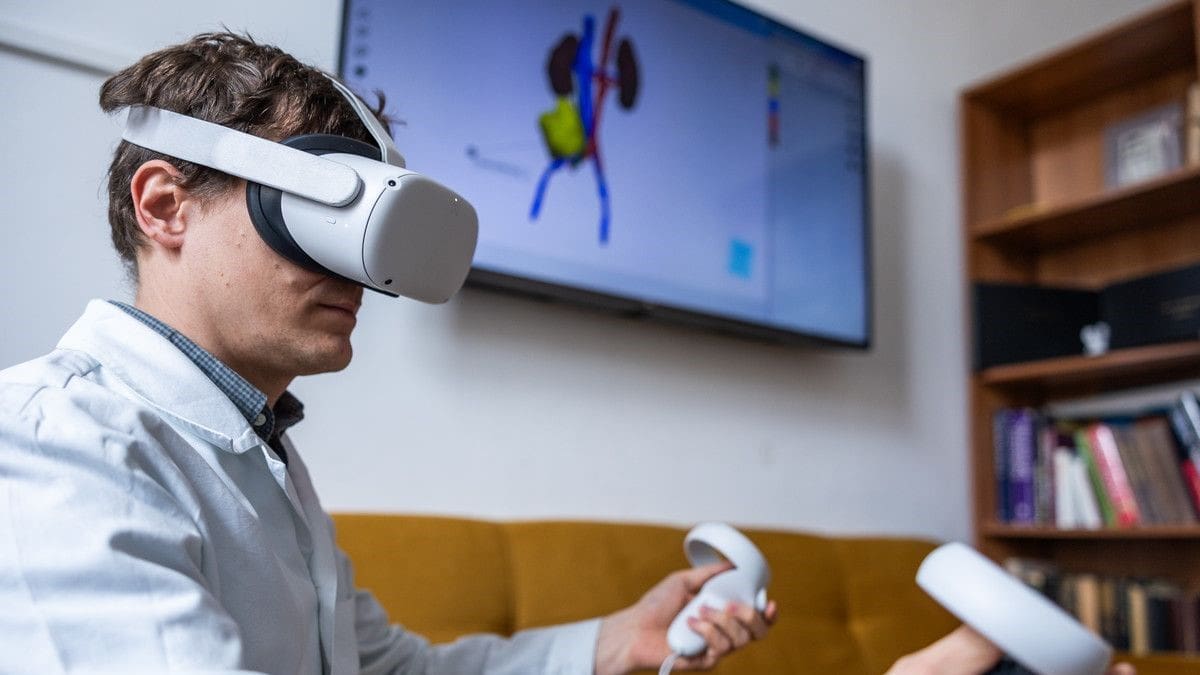For the first time in Hungary, a surgical procedure was applied to a paediatric oncology patient where, prior to the intervention, the tumour and its surroundings were virtually visualized through a VR headset, providing a precise image of the tumour’s location and the condition of the surrounding vessels. Thanks to this procedure, surgical time can be shortened, and the likelihood of complications reduced, Semmelweis University announced on Wednesday.
According to their statement, the first operation took place in January at the Paediatric Clinic of Semmelweis University, involving a seven-year-old child suffering from a malignant tumour of the sympathetic nervous system, neuroblastoma. The tumour removal was uncomplicated, and the patient could continue recovering at home a few days later.
‘The novelty of the procedure lies in the preparation and planning before surgery. Based on MRI images, three-dimensional models of the tumour are created with the help of a software, which are then visualized through VR goggles prior to the operation.
Through the goggles, we can see the tumour, its surroundings, important structures, and vessels,’
explained Dr Tamás Prokopp, paediatric surgeon and the first doctor to perform this surgery in Hungary.
The clinical specialist of the Paediatric Clinic at Semmelweis University added that they see exactly what they will see during the surgery through the goggles, allowing them to prepare for the intervention even more effectively and in a personalized manner.
‘Often, the tumour also surrounds or displaces the vessels of certain organs, such as the vessels associated with the kidneys or the large arteries originating from the aorta, which require increased attention from the surgical team. In case of injury, significant blood loss or even loss of the kidney may occur,’ Dr Prokopp pointed out.
Thanks to the VR goggles and 3D technology, the visualization of the images allows
preparation in advance for the location and condition of the vessels, thereby reducing various complications.
It is also expected that the application of this technique will shorten the surgical time. Moreover, if complications and intervention time can be reduced, the recovery process will also be faster.
According to the statement, the introduction of the technique for paediatric patients is the result of successful collaboration. Initially, within the framework of joint research with a Spanish paediatric oncology centre, it is being used for neuroblastomas, which account for approximately six to ten surgeries annually in Hungary. In the future, the procedure will also be applicable for other types of tumours, such as those affecting the liver and kidneys.
Related articles:
Sources: Hungarian Conservative/Semmelweis University








